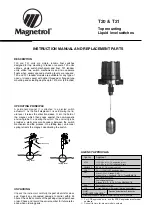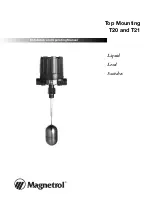
89
would cause all supplicants attached to the port to reply to requests sent from the switch.
Instead, the switch uses the supplicant's MAC address, which is obtained from the first
EAPOL Start or EAPOL Response Identity frame sent by the supplicant. An exception to this
is when no supplicants are attached. In this case, the switch sends EAPOL Request Identity
frames using the BPDU multicast MAC address as the destination - to wake up any
supplicants that might be on the port.
The maximum number of supplicants that can be attached to a port can be limited using the
Port Security Limit Control functionality.
■
MAC-based Auth
.
– Enables MAC-based authentication on the port. The switch does
not transmit or accept EAPOL frames on the port. Flooded frames and broadcast traffic
will be transmitted on the port, whether or not clients are authenticated on the port,
whereas unicast traffic from an unsuccessfully authenticated client will be dropped.
Clients that are not (or not yet) successfully authenticated will not be allowed to transmit
frames of any kind.
The switch acts as the supplicant on behalf of clients. The initial frame (any kind of frame)
sent by a client is snooped by the switch, which in turn uses the client's MAC address as both
user name and password in the subsequent EAP exchange with the RADIUS server. The 6-
byte MAC address is converted to a string on the following form “xx-xx-xx-xx-xx-xx”, that is, a
dash (-) is used as separator between the lower-cased hexadecimal digits. The switch only
supports the MD5-Challenge authentication method, so the RADIUS server must be
configured accordingly.
When authentication is complete, the RADIUS server sends a success or failure indication,
which in turn causes the switch to open up or block traffic for that particular client, using the
Port Security module. Only then will frames from the client be forwarded on the switch. There
are no EAPOL frames involved in this authentication, and therefore, MAC-based
Authentication has nothing to do with the 802.1X standard.
The advantage of MAC-based authentication over port-based 802.1X is that several clients
can be connected to the same port (e.g. through a 3rd party switch or a hub) and still require
individual authentication, and that the clients don't need special supplicant software to
authenticate. The advantage of MAC-based authentication over 802.1X-based authentication
is that the clients don't need special supplicant software to authenticate. The disadvantage is
that MAC addresses can be spoofed by malicious users - equipment whose MAC address is
a valid RADIUS user can be used by anyone. Also, only the MD5-Challenge method is
supported. The maximum number of clients that can be attached to a port can be limited
using the Port Security Limit Control functionality. Further Guidelines for Port Admin State:
■ Port Admin state can only be set to Force-Authorized for ports participating in the
Spanning Tree algorithm (see page 117).
■ When 802.1X authentication is enabled on a port, the MAC address learning function
for this interface is disabled, and the addresses dynamically learned on this port are
removed from the common address table.
Содержание GEP-1070
Страница 80: ...80 authentication from any point within the network...
Страница 168: ...168...
















































